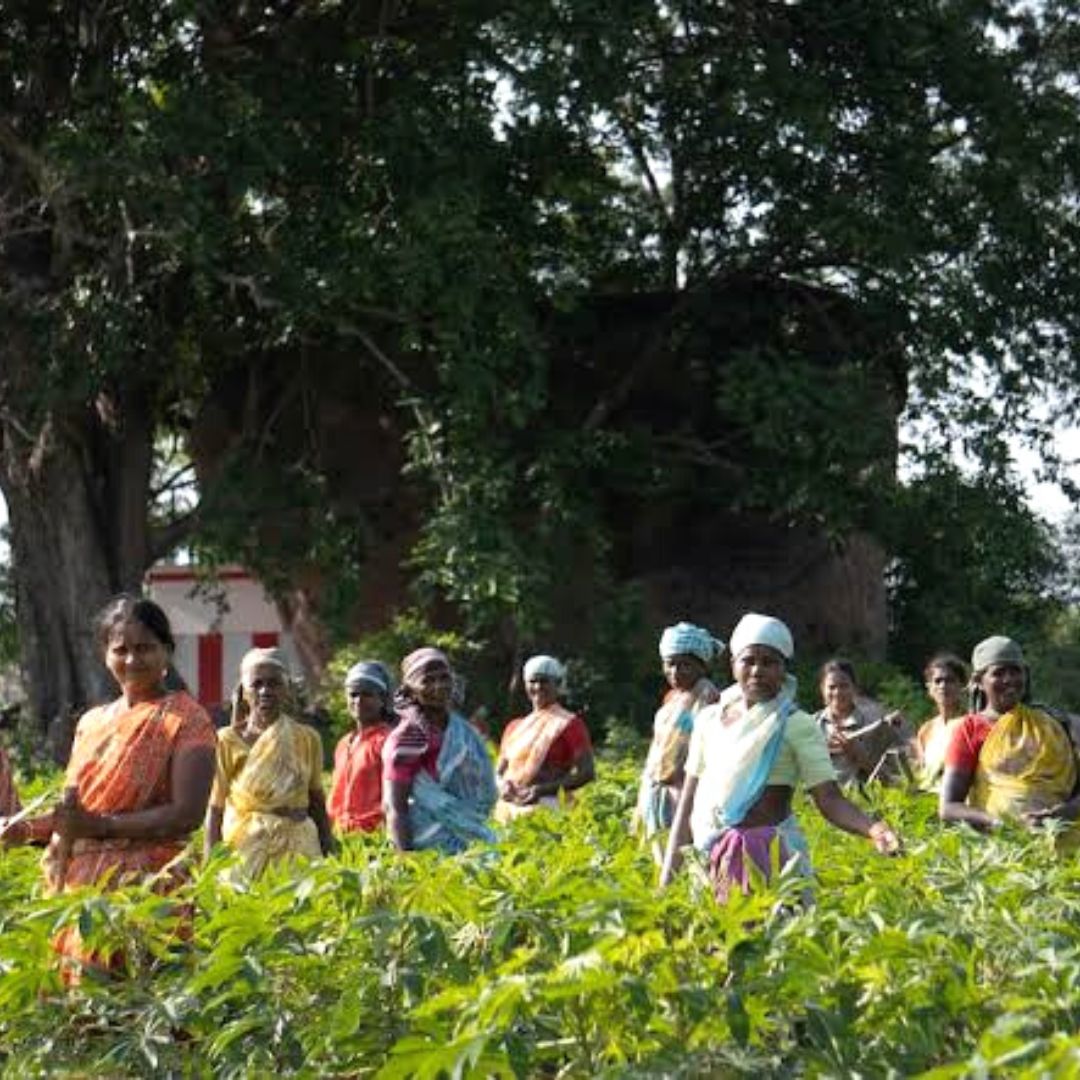
Image Credits: Unsplash
International Rural Women's Day: Know How Giving Equal Resources To Female Farmers Would Lift Millions From Hunger
Writer: Laxmi Mohan Kumar
She is an aspiring journalist in the process of learning and unlearning many things. Always up for discussions on everything from popular culture to politics.
Others/World, 15 Oct 2022 8:47 AM GMT
Editor : Shiva Chaudhary |
A post-graduate in Journalism and Mass Communication with relevant skills, specialising in content editing & writing. I believe in the precise dissemination of information based on facts to the public.
Creatives : Laxmi Mohan Kumar
She is an aspiring journalist in the process of learning and unlearning many things. Always up for discussions on everything from popular culture to politics.
On International Rural Women's Day, a study by the International Fund For Agriculture Development identified the root causes of inequalities faced by rural women involved in farming and aims to turn this around.
To acknowledge the contributions of rural women on the national and international levels, the United Nations (UN) observes October 15 as the International Day of Rural Women. This year the celebrations revolve around the theme of "Rural Women, key for a world free from hunger and poverty" and look into the ideas of empowerment and equality.
In India, agriculture is one of the largest contributors to its Gross Domestic Product (GDP) and among the key factors that drive this field are the rural women employed in it. They play an immense role in the country's economic development and sustenance and yet continue to be among the highly discriminated groups in this line of occupation.
Access To Equal Resources
The percentage of rural women in India who depend on agriculture as their primary livelihood is as high as 84 per cent. They also take up about 70 per cent of the work involved in the livestock sector, which happens to be one of the world's largest livestock production systems. Regarding global data, about 43 per cent of agricultural workers are women, yet their roles continue to be underestimated.
Despite being largely responsible for the food that comes to the tables of every individual, women agriculturists continue to be denied equal access to the same resources as men. Studies continue to show that women have less access to inputs (seeds, fertiliser, labour, and finance), critical services (training, insurance) and organised markets than their male counterparts. With such limited access to land, finance, training, inputs and equipment, rural women are not able to contribute effectively and achieve a form of financial or food security.
A study by the International Fund For Agriculture Development found that if women farmers had similar access to agriculture and financial resources that are availed by men, about 100 to 150 million people would be lifted out of hunger. So the inequity in access to resources impacts both the economic well-being of women farmers as well as the overall agricultural output of the country. Therefore, looking into the root of such inequal distributions becomes pivotal to tackling the concern.
Expanding Land Ownership
One of the key areas that have been discussed while talking about inequality among rural women is land ownership. Globally, women constitute only 15 per cent of all landholders, even though almost one in two farmers are women. They are less likely to hold a legal right over the land they cultivate, which places uncertainty on their main source of income and food. Unlike India, where there is a provision to accommodate women's land owners, some countries do not even permit women to own land.
However, limited ownership in an agriculture-dependent country could drastically impact its economic and social well-being. Therefore, access to land and good soil becomes the fundamental idea for addressing inequalities.
Connectivity Through Formal Markets And Digital Economy
A similar form of inequality is evident in price realisation with unequal access to formal markets. Women often sell their produce for a lesser price than their male counterparts due to their limited access to market space and its understanding.
The limited market understanding has also been traced to the disparity in access to technology. In the global arena, phones and other electronic devices are consistently being used to connect farmers with the markets. It has become an essential tool for buying, selling, reporting, transferring, and insuring what is being harvested. Across low and middle-income countries, women are about ten per cent less likely to own a mobile device than men and about 313 million fewer women than men use mobile internet services.
Support Amidst Climate Change
Rural women in developing countries are considered to be those who are worst affected by climate change. Since many of their primary occupations are agriculture, they heavily rely on favourable climate conditions. Any form of climate-related effect on their agricultural productivity could impact their entire livelihood. Based on this understanding, the study indicated that women are more likely to die or lose essential services when struck by a disaster.
Only 1.7 per cent of all climate finance reaches small-scale producers in developing countries. Governments often bypass women's livelihoods while planning and funding rural development programmes and climate change adaptation efforts. These forms of structural and systemic inequalities make rural women even more vulnerable to climate change impacts than male farmers.
About four in five people who were forced to leave their homes due to climate-related disasters were accounted to be women. Building their resilience to climate change then becomes crucial in empowering rural women.
In India, particularly, the agricultural sector is highly dependent on natural resources and weather conditions. This makes agriculture producers, in general, prone to loss of livelihood. As per an article by the Hindustan Times, the need for a more augmented approach to equip farmers, especially women, with such resilience needs to be looked into on a policy-making level.
Empowerment of rural women can be turned into reality only through collaborative efforts that address and resolve these structural inequalities within the farming space. Identifying the potential that rural women come along with and equipping them with adequate resources and information on markets will enable them to achieve the goal of doubling farmers' income. This alone would improve the lives of millions across the world.
Also Read: Impacting Over 6 Million Farmers, Chennai-based Samunnati Is Combining Agriculture And Technology
 All section
All section














